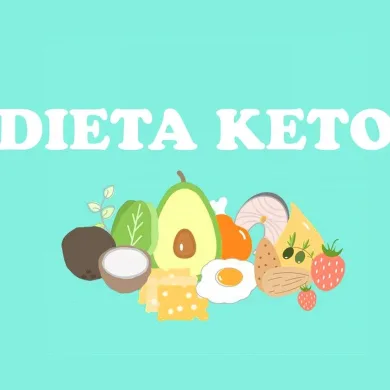Easy Start: Balanced Diet Guide for Beginners
Introduction to a Balanced Diet
Embarking on a journey towards better health and wellness often begins with evaluating and adjusting your diet. For those new to this concept, understanding the fundamentals of a balanced diet can be both exciting and overwhelming. A balanced diet is crucial for maintaining optimal health, supporting bodily functions, and reducing the risk of chronic diseases. This article will provide an easy-to-follow guide for beginners, focusing on the essentials of a balanced diet, practical tips, and common pitfalls to avoid.
What is a Balanced Diet?
A balanced diet provides the necessary nutrients your body needs to function correctly. It includes a variety of foods in the right proportions to supply the essential nutrients: carbohydrates, proteins, fats, vitamins, and minerals. A balanced diet not only supports daily activities but also ensures long-term health by preventing nutrient deficiencies and reducing the risk of chronic diseases like obesity, heart disease, and diabetes.
Components of a Balanced Diet
– **Carbohydrates**: Often vilified, carbohydrates are a primary energy source for the body. Opt for complex carbohydrates found in whole grains, fruits, and vegetables, which provide sustained energy and are rich in fiber.
– **Proteins**: Essential for growth and repair, proteins should come from diverse sources like lean meats, fish, eggs, dairy, legumes, and nuts to ensure a complete amino acid profile.
– **Fats**: Healthy fats are vital for brain function and hormone production. Include sources of unsaturated fats such as avocados, olive oil, and fatty fish, while limiting saturated and trans fats.
– **Vitamins and Minerals**: These micronutrients are critical for various bodily functions. A diet rich in fruits, vegetables, lean proteins, and whole grains will typically provide the necessary vitamins and minerals.
– **Water**: Hydration is often overlooked but is crucial for digestion, nutrient absorption, and overall health. Aim for at least 8 glasses of water daily, adjusting for activity level and climate.
Benefits of a Balanced Diet
Adopting a balanced diet yields numerous health benefits, including:
– **Improved Energy Levels**: Balanced meals stabilize blood sugar levels, preventing energy crashes and maintaining focus throughout the day.
– **Weight Management**: By providing essential nutrients without excess calories, a balanced diet supports healthy weight loss and maintenance.
– **Reduced Risk of Chronic Diseases**: A diet rich in fruits, vegetables, lean proteins, and whole grains lowers the risk of heart disease, diabetes, and cancer.
– **Enhanced Mental Health**: Proper nutrition impacts brain function, improving mood and cognitive abilities while reducing the risk of depression and anxiety.
– **Better Digestive Health**: High-fiber foods promote regular bowel movements and prevent digestive issues like constipation and bloating.
Creating a Balanced Diet Plan
Designing a balanced diet plan involves incorporating a variety of foods from different food groups. Here are steps to help you get started:
Step 1: Assess Your Current Diet
Begin by evaluating your current eating habits. Keep a food diary for a week to identify areas for improvement, such as excessive sugar intake, lack of vegetables, or irregular meal patterns.
Step 2: Set Realistic Goals
Establish achievable goals based on your assessment. Whether it’s increasing vegetable intake or reducing processed foods, start with small changes to avoid feeling overwhelmed.
Step 3: Plan Balanced Meals
Create meals that include a balance of macronutrients. For example, a balanced lunch might include grilled chicken (protein), quinoa (carbohydrates), and a side salad with olive oil (fats).
Step 4: Practice Portion Control
Understanding portion sizes is crucial. Use visual cues, such as a fist for a serving of carbohydrates or a palm for protein, to gauge appropriate portions.
Step 5: Stay Hydrated
Incorporate plenty of water into your daily routine. Herbal teas, infused water, and low-sugar juices can also contribute to your hydration goals.
Practical Tips for Maintaining a Balanced Diet
– **Plan Your Meals**: Weekly meal planning saves time and ensures you have balanced options readily available.
– **Cook at Home**: Preparing your meals allows you to control ingredients and portion sizes, reducing the temptation of unhealthy takeout options.
– **Snack Wisely**: Opt for healthy snacks like nuts, fruits, or yogurt to keep hunger at bay and energy levels stable.
– **Read Labels**: Understanding nutritional labels helps you make informed choices and avoid hidden sugars and unhealthy fats.
– **Be Mindful of Sugar and Salt**: Excessive sugar and salt can contribute to health issues; limit intake by choosing fresh, whole foods over processed ones.
Common Pitfalls to Avoid
– **Skipping Meals**: Skipping meals can lead to overeating later in the day and disrupt your body’s metabolism.
– **Over-reliance on Supplements**: Whole foods should be your primary nutrient source; supplements should only fill gaps as needed.
– **Restrictive Diets**: Extreme diets can lead to nutrient deficiencies and are often unsustainable. Focus on balance and variety instead.
– **Emotional Eating**: Eating in response to emotions rather than hunger can lead to unhealthy habits. Practice mindful eating and address emotional triggers.
Conclusion
Transitioning to a balanced diet is a gradual process that requires patience and commitment. By understanding the core components of a balanced diet and applying practical strategies, beginners can set the foundation for a healthier lifestyle. Remember, the goal is not perfection but progress. Embrace flexibility, enjoy the journey, and celebrate small victories along the way. With time and effort, a balanced diet will become a natural and rewarding part of your daily routine.















Add comment